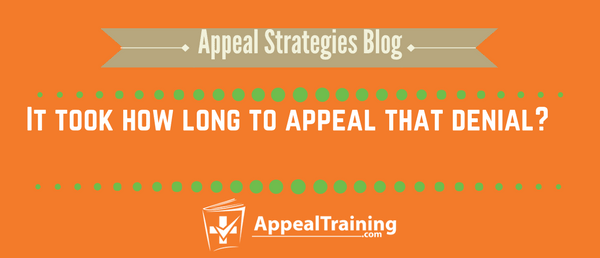One of the chief complaints about appealing denials for patients is that it takes too much time to do it well.
Some might even say it takes too long to do it poorly thanks to poorly designed insurance company appeal processes.
So, do we not do it?
Do we do it half-heartedly with a simple uncustomized “please reconsider” appeal letter?
Or do we defy good sense and sound time management practices in order to don our capes, sharpen our “I call BS” argument skills and write a highly specific appeal letter with a clear demand for quality review?
Lets Do That Last One!
At Appeal Solutions, we provide all the resources to allow you to develop really, really excellent appeal letters. However, the most effective appeal letter will always be the one customized to cite patient-specific particulars. Further, the attachments to your appeal letters, from medical records to insurance eligibility documentation, can make-or-break your appeal success. Bottom line, this means appeal development takes some time.
However, in reflecting about the time investments many healthcare organization make in this effort, I would like to suggest that you start using your appeal expertise and case studies for a broader audience and a broader goal than a one-time appeal for reimbursement.
5 Ideas to stretch your investment to other areas of your practice:
New Use 1: Post A “We advocate for our patients” blog post
Write a blog post for your website about your organization’s advocacy efforts. Use a recent appeal as a case-in-point. Explain that your financial team members are experts at understanding healthcare coverage. As such, you are uniquely able to assist with insurance benefits access and appeals. Be sure and cover the “Why” in this type of post meaning that your efforts are not just about reimbursement but also about providing excellent care. You can convey a sense of your organization’s commitment to the whole healthcare journey, from beginning to end, by discussing patient advocacy within the context of appeal efforts.
New Use 2: Contact A Colleague
It is important to maintain a close relationship to healthcare colleagues – from clinical colleagues to financial profession colleagues. Your network is a goldmine of information and you should always be on the lookout for ways to strengthen that connection. Once your blog post is finished (see New Use 1), you can easily cut and paste the details into an email for a few important colleagues. Ask them specifically about their experiences with that particular payer and what types of appeals are most effective for their office. These efforts allow you to better assess your internal claim management performance.
New Use 3: Contact A Specialty Publication and/or Healthcare Finance Reporter
There are thousands of specialty-care publications all with different areas of focus – from finance and staff development to advocacy and patient experience. Many of these publications are eager to receive how-to articles from readers. Submit your blog post and ask if the publication is interested in this type of article. They may want to reprint the blog post as an editorial or it may be forwarded to one of their staff writers to utilize when working on a news piece. It is a great way to increase public awareness around challenges which affect the practice of medicine. In fact, we welcome your submissions to our newsletter and would love to print a “From The Field” appeal story. Send any such submission to t.tipton@appealsolutions.com.
New Use 4: Prepare a Payer Specific Pretreatment Reimbursement Checklist
Do you anticipate future problems with the type of treatment you are currently appealing? It might be time to develop a strategy to share with your patient access team members. Developing a Payer-specfic reimbursement checklist entails utilizing some of the features of your scheduling system to better utilize reminders regarding payer-specific requirements. The reminders allow you to direct the scheduler to review for appropriate forms but can also include reminders regarding clinical documentation requirements which might be helpful if the carrier has treatment prerequisites. Such reminders will vary but as follows are a few points to consider:
- How will the reminders affect workflow?
- Should the procedure-specific demands be discussed with a payer representative? Perhaps you can work out an agreement with the payer to better facilitate faster approvals with less bureaucracy.
- Does the issue involve referral source education? Some payer requirements can be addressed by working more closely with referral sources regarding documentation needs.
- If a checklist approach does not work, what other alternatives are available for denial avoidance including increased staff training or clinical documentation improvement training.
New Use 5: Connect with your Patient
Patients are almost always grateful for assistance with medical appeals. Submitting an appeal on a patient’s behalf to their health insurer strengthens the physician-patient bond and earns trust. Don’t miss out on the opportunity to update the patient on your advocacy efforts. Plus, the patient can be encouraged to follow-up with the insurance carrier and seek a prompt decision on the appeal. You may have taken a critical first step and energized the patient to act. Lastly, when you contact the patient, you can explain that there are often external appeal options if the carrier upholds the denial. If your organization is unlikely to pursue this additional review, be sure and encourage the patient to exercise their right. Typically, there is no or minimal costs to the patient for initiating external review of a denial.




Leave A Response